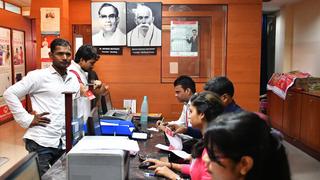A combination of factors, including rising interest rates, regulatory action and funding scarcity, could moderate growth in the non-banking financial company (NBFC) sector from 18 per cent in 2024 to 13-15 per cent in the coming year, according to rating agency ICRA.
NBFCs are a vital component of India’s financial sector and the overall economy. In a country where more than three-fifths of the population lives in rural and semi-urban settings, NBFCs have thrived, thanks to their greater reach than banks, easier processes, faster loan disbursals and doorstep services.
NBFCs’ total share of credit grew nearly 50 per cent in the last decade, powered mainly by capital inflows. Traditionally, banks have been the largest financiers of NBFCs, accounting for 50 per cent of their borrowings, through direct funding and by buying the non-convertible debentures (NCDs) issued by them. This is fast changing.
The Reserve Bank of India (RBI) is nudging NBFCs to grow prudently and focus on long-term sustainability to avert stress in any segment. In November 2023, it increased the risk weights for loans to NBFCs by 25 basis points, making bank borrowing more expensive for them. Thereafter, bank funding to NBFCs reduced to 15 per cent in April this year, as against 22 per cent in the year-ago period.
The RBI also asked NBFCs to focus on compliance, risk management and redressal of customer grievances.
Additionally, large NBFCs are expected to refrain from lending to smaller NBFCs and fintechs to help avert systemic risks.
Challenges
The assets under management (AUM) in the NBFC sector is seen rising from ₹47 lakh crore in March 2024 past the psychological milestone of ₹50 lakh crore in FY25. In the first half of the current financial year, NBFCs, including State-owned finance companies and refinance institutions, raised ₹3.23 lakh crore, a tad higher by 3.11 per cent year-on-year (y-o-y). Private-sector NBFCs mopped up ₹1.91 lakh crore, nearly unchanged y-o-y.
Smaller NBFCs and those with lower credit ratings have been hit more by the rise in borrowing rates and shortage of funding avenues. Growth in the sector has significantly moderated.
Sources of funding
The fund squeeze from banks and the need for incremental growth capital is forcing NBFCs to explore diversified funding sources, both domestic and overseas. In the domestic market, NBFCs raise funds through NCDs, commercial papers, securitisation and equity markets. Co-lending and external commercial borrowings are the other avenues. However, while India’s vibrant equity market offers a good source of funding, it involves a long-drawn process and not every NBFC can opt for it.
That said, if India can develop a strong bond market then the interest seen in the equity market could be replicated in the debt market too. A vibrant domestic debt market can move a crisis outside the banking system, making it more manageable for the government. However, India continues to suffer from a shallow bond market with little liquidity, keeping away investors, especially the retail category. This makes it harder for NBFCs to raise funds from this segment.
The challenges include market regulator SEBI’s restriction on the issuance of International Securities Identification Number (ISIN) in a year to nine.
Second is the absence of active market makers — providers of liquidity as an intermediary between buyers and sellers.
Mutual funds, pension funds, provident funds and corporate treasuries, too, invest in NBFCs, with the combined borrowings estimated at over ₹5 lakh crore. However, they largely stick to AAA-rated NBFCs.
The cut in US Federal Reserve rates, coupled with lower hedging costs, makes overseas borrowing attractive for NBFCs but it is still early days.
Priority sector lending
A large section of India’s population is involved in agriculture and related activities, which fall in the unorganised sector. This segment needs priority sector lending (PSL) support, where NBFCs can play an important role. Yet, worryingly, for NBFCs and microfinance institutions (MFIs) the credit costs are expected to rise from 2.6 per cent in March 2024 to 4 per cent by March 2025. On the other hand, NBFCs that are in asset acquisition financing and micro-enterprise financing can become great sources of PSL assets for banks.
To bring down costs, co-lending by NBFCs and banks can be a win-win for both.
(The writer is Executive Vice-Chairman, Shriram Finance Limited)







Comments
Comments have to be in English, and in full sentences. They cannot be abusive or personal. Please abide by our community guidelines for posting your comments.
We have migrated to a new commenting platform. If you are already a registered user of TheHindu Businessline and logged in, you may continue to engage with our articles. If you do not have an account please register and login to post comments. Users can access their older comments by logging into their accounts on Vuukle.